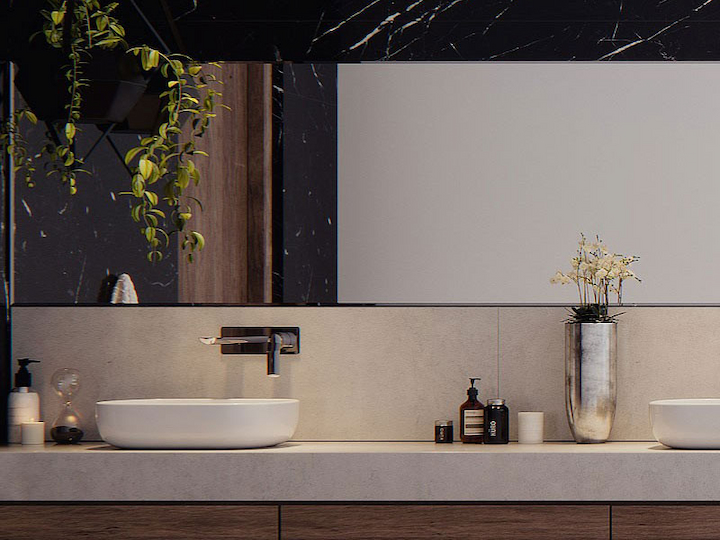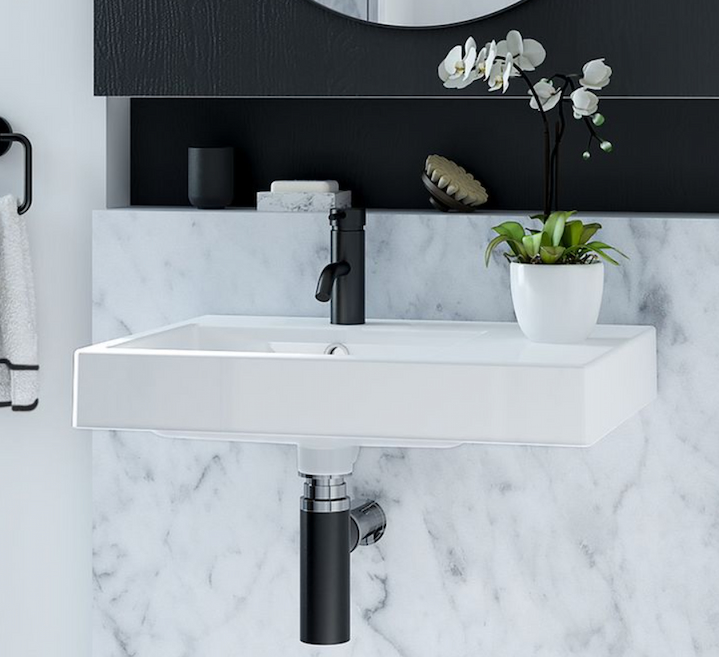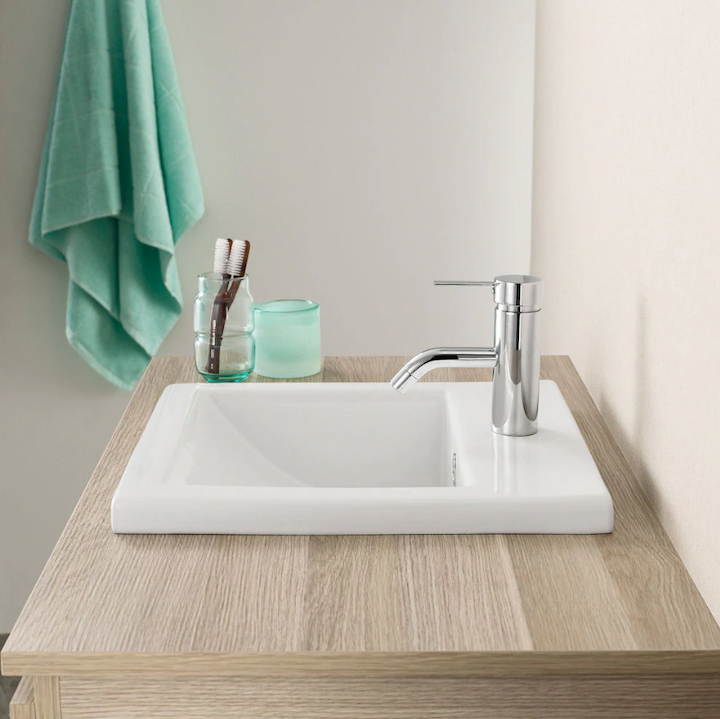The bathroom may be the smallest room in the house, but it’s definitely one of the most important. After all, it’s a place where we do our morning pick-me-ups and evening wind-downs. A place where we can relax and rejuvenate. So, it’s no wonder that many of us want our bathrooms to look and feel just right.
The bathroom’s compact size means that every element must work together efficiently and effectively. It’s important to carefully consider every detail, from the layout to the materials used, all while adding style and elegance to your space. And one of the most crucial details in any bathroom is the basin, which serves as both a functional element and a contemporary focal point.
What Types of Bathroom Basins Are There?
As you’d expect, there are many different types of basins to choose from. Knowing which one is right for your needs is essential to creating a fully operational and modern bathroom. Let’s take a look at some of the most popular types available today.
Above Counter Basins

Based on the name alone, you can probably guess that this type of basin is installed above the counter. This style was highly popularised in the mid-2000s and has continued to grow in popularity ever since. The defining feature of practical above counter basins is the exposed bowl which creates a sleek and minimalist look that many homeowners crave.
In addition to their good looks, above counter basins are also known for being very easy to install. In fact, you can do this in one of two ways – either by mounting the sink base around the drain hole or by drilling a larger hole that allows the sink to dip slightly into the counter. While the former method is a bit more challenging, it tends to provide a cleaner, more polished look.
Regardless of the installation method you choose, an above counter basin is a great way to add a touch of luxury to your bathroom without breaking the bank. Its appearance closely resembles that of vintage or antique washstands, but without the heavy price tag. It gives your bathroom an elegant, old-world feel that is sure to impress everyone that lays eyes on it. How’s that for a statement piece?
And finally, the main thing to keep in mind with these kinds of basins is that they require a bit more maintenance than other types. This is because the exposed bowl can become stained more easily, so you’ll need to wipe it down regularly to keep it looking its best.
Inset Basins
Inset basins, on the other hand, are designed to be placed directly into the countertop. This type is intended to create a seamless look in your bathroom, as if the basin is almost floating on the counter.
Just make sure your countertop is made of a durable and waterproof material such as marble, granite, or quartz. This is because inset basins don’t have any lip or edge that extends beyond the counter, so any water that gets past the basin will damage the surrounding area.
Wall-Mount Basins

A wall-mount basin is exactly what it sounds like – a basin that is mounted on the wall. This type of sink is most commonly seen in public restrooms, but it’s becoming increasingly popular in private homes as well.
Their most striking feature is their lack of pedestal or counter support, which makes them great for small bathrooms as they free up valuable floor space. They’re also relatively easy to install, as long as you have a solid wall to mount them on.
Pedestal Basins
For a more traditional and old-school spin on the bathroom basin, consider a pedestal sink. The name comes from the fact that these basins are supported by a pedestal, column, or console.
This gives the basin a lot of stability and helps to keep the base upright. Some models feature intricate designs and detailed embellishments, while others are simpler and more understated.
Key Considerations When Choosing a Bathroom Basin
Now that you know a little bit more about the different types, it’s time to start thinking about which one is right for your needs. Here are a few key things to keep in mind:
Size and Shape
The overall size and shape of your basin will have a big impact on the look and feel of your bathroom. For example, round basins tend to take up less space and can make a small bathroom appear larger. Conversely, rectangular basins tend to be more eye-catching and make a bolder statement.
Of course, you’ll also need to make sure that the basin you choose is proportional to the rest of your bathroom fixtures. For instance, a large and bulky sink might look out of place in a bathroom with delicate, dainty features.
Faucet Compatibility
Plumbing considerations play a key role in what you can or can’t do with your bathroom basin. You have to make sure that the sink you choose is compatible with the type of faucet you want.
For example, most wall-mount basins require special faucets that are designed to be mounted on the wall as well. Similarly, some inset basins can only be used with certain types of faucets, such as those that have a single-hole design and a high arc.
Materials

The material of your basin will also affect both its appearance and its durability. Some of the most popular choices include ceramic, porcelain, glass, and metal.
Ceramic and porcelain are classic choices that have been used for centuries. They’re both very sturdy and can be glazed over to create a glossy or matte finish.
Glass is another popular option, especially when it comes to present-day designs. It can be used to create a range of different looks, from contemporary to rustic and vintage.
Finally, metal is a good solution for those who want an industrial or edgy look in their bathroom. Stainless steel is the most common type of metal, but you can also find sinks made from copper, brass, and bronze.
Cost
As with anything else, the cost of your bathroom basin will depend on the materials used, the size and style of the sink, and any special features it might have. In general, pedestal and wall-mount basins tend to be more expensive than inset or above-counter models.